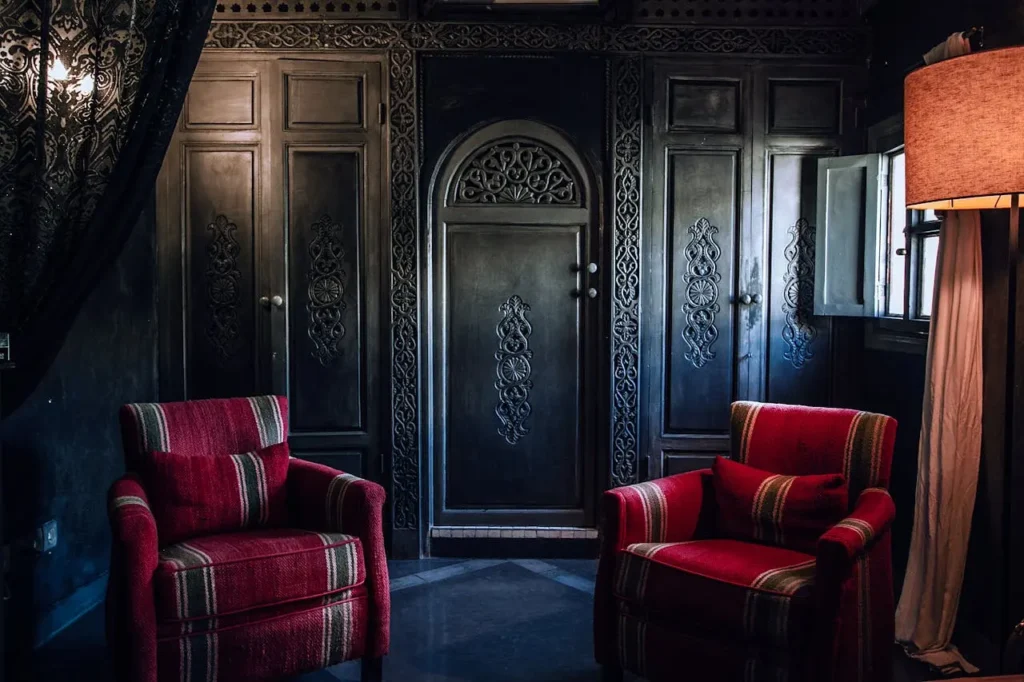The Victorian era, from 1837 to 1901, gifted us with a rich architectural and interior design legacy. Today, many homeowners and designers are rediscovering the charm of Victorian house interior, blending classic elements with contemporary touches to create nostalgic and functional spaces.
Victorian house interior are known for their intricate details, rich colors, and ornate furnishings. These designs reflect a time when craftsmanship was paramount, and homes were adorned to showcase wealth and taste. In recent years, there’s been a resurgence of interest in Victorian styles, with modern adaptations making them suitable for today’s living.
Key Characteristics of Victorian Interiors

Victorian interiors are characterized by their elaborate ornamentation and intricate detailing. Common features include steep, tiled roofs, painted brick, bay windows, and asymmetrical designs. Inside, wooden floorboards, plaster cornice, sweeping staircases, wooden sash windows, and tiled entrance hallways are typical.
Color Schemes and Textures

The Victorian era favored rich, dark colors and an abundance of opulent design choices. Walls were typically covered with rich, dark paint colors or adorned with tapestries or wallpaper featuring bold floral, leaf, or vine motifs. Walls were sometimes painted to mimic marble or wood-grained finishes.
Furniture and Upholstery

Victorian furniture is known for its ornate designs and luxurious materials. Pieces often feature intricate carvings and are upholstered in rich fabrics like velvet and brocade. The use of deep buttoned upholstery and exposed wooden furniture legs adds to the period’s distinctive look.
Lighting and Fixtures

Lighting in Victorian homes was both functional and decorative. Chandeliers made of brass or bronze, often adorned with crystals, were common in dining rooms and parlors. Wall sconces and oil lamps added to the ambient lighting, contributing to the warm and inviting atmosphere.
Wall and Window Treatments

Windows in Victorian homes featured heavy fabric drapes and opulent window treatments, such as curtains lined with silk or wool. These treatments added to the luxurious feel of the interiors and provided privacy.
Flooring and Carpets

Flooring choices in Victorian interiors often included parquetry or patterned tiled floors, wainscoting, built-in shelving, and carved moldings. These elements provided a lovely Victorian style backdrop to newer furniture.
Decorative Accessories

Accessories and decorations were prominently displayed and covered every surface in Victorian interior design. Examples include gallery walls of framed pictures, displayed china, souvenirs, vases, and lace doilies. Embroidered cushions decorated couches, and potted plants like palms and ferns were popular. Stained glass was also a common way to add color to rooms.
Modern Interpretations of Victorian Design

In 2024, interior design trends have seen a resurgence of Victorian-inspired details. Ornate moldings and a moody palette are part of the trend of all things Victorian. Walls comprised of different pieces of oak in square and diamond shapes, along with crown moldings and chevron floors mimicking early 19th-century Parisian salons, are enjoying a design revival. Balancing these classic styles with more modern millwork can create a lighter, updated look.
Conclusion
The Victorian house interior remains a testament to a time of elegance and attention to detail. By understanding its key elements and thoughtfully integrating them with modern sensibilities, one can create a space that honors the past while embracing the present.
FAQs
Q: How can I incorporate Victorian elements into a modern home?
A: Start by introducing ornate moldings, rich color palettes, and vintage furniture pieces. Balancing these with contemporary decor ensures the space feels both classic and current.
Q: Are Victorian interiors suitable for small spaces?
A: Yes, by selecting key elements like a statement chandelier or patterned wallpaper, you can infuse Victorian charm without overwhelming the space.
Q: What are some cost-effective ways to achieve a Victorian look?
A: Thrift stores and antique shops often have affordable Victorian-style furniture and accessories. Additionally, DIY projects like adding decorative moldings or repainting walls in rich hues can make a significant impact.


